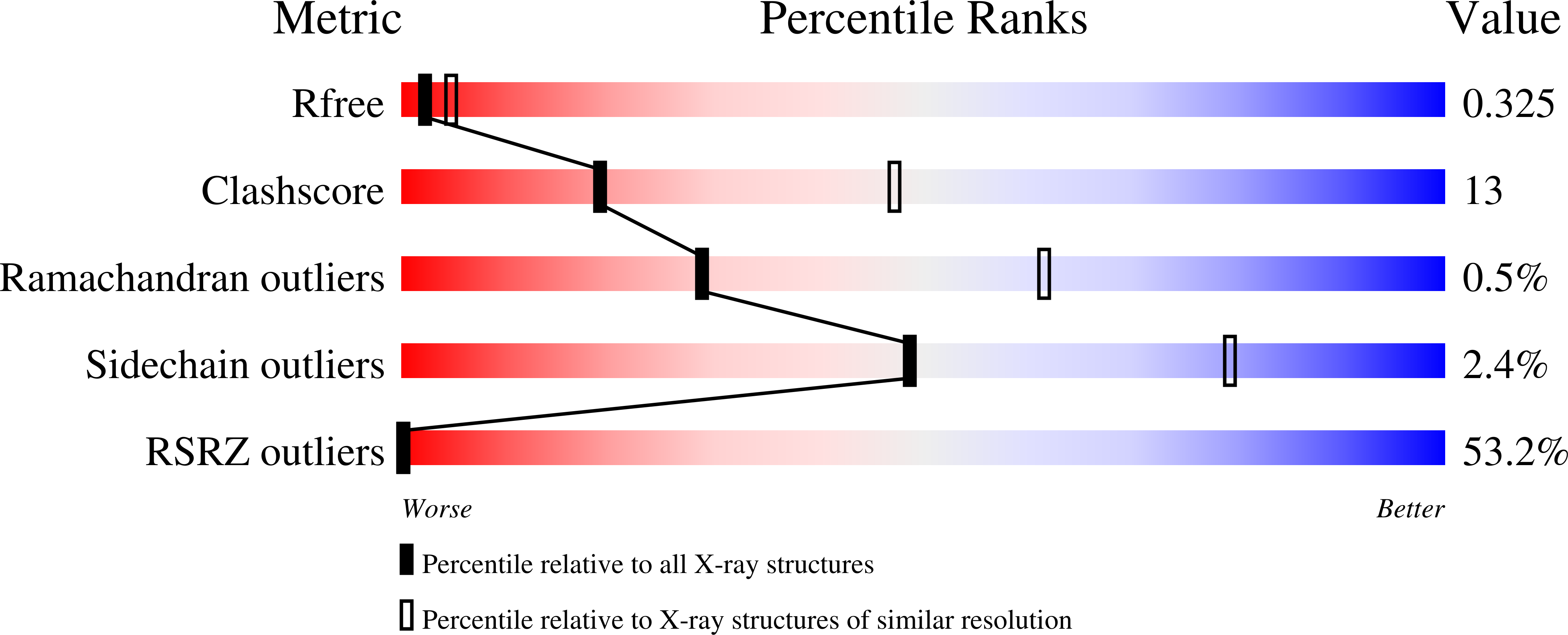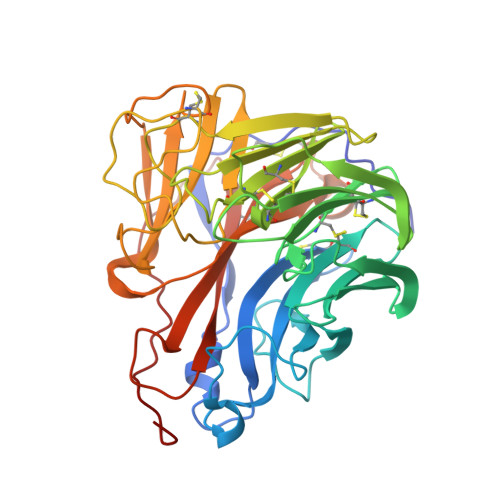A Novel Recombinant Influenza Virus Neuraminidase Vaccine Candidate Stabilized by a Measles Virus Phosphoprotein Tetramerization Domain Provides Robust Protection from Virus Challenge in the Mouse Model.
Strohmeier, S., Amanat, F., Zhu, X., McMahon, M., Deming, M.E., Pasetti, M.F., Neuzil, K.M., Wilson, I.A., Krammer, F.(2021) mBio 12: e0224121-e0224121
- PubMed: 34809451
- DOI: https://doi.org/10.1128/mBio.02241-21
- Primary Citation of Related Structures:
7S0I - PubMed Abstract:
Current seasonal influenza virus vaccines do not induce robust immune responses to neuraminidase. Several factors, including immunodominance of hemagglutinin over neuraminidase, instability of neuraminidase in vaccine formulations, and variable, nonstandardized amounts of neuraminidase in the vaccines, may contribute to this effect. However, vaccines that induce strong antineuraminidase immune responses would be beneficial, as they are highly protective. Furthermore, antigenic drift is slower for neuraminidase than for hemagglutinin, potentially providing broader coverage. Here, we designed stabilized recombinant versions of neuraminidase by replacing the N-terminal cytoplasmic domain, transmembrane, and extracellular stalk with tetramerization domains from the measles or Sendai virus phosphoprotein or from an Arabidopsis thaliana transcription factor. The measles virus tetramerization domain-based construct, termed N1-MPP, was chosen for further evaluation, as it retained antigenicity, neuraminidase activity, and structural integrity and provided robust protection in vivo against lethal virus challenge in the mouse model. We tested N1-MPP as a standalone vaccine, admixed with seasonal influenza virus vaccines, or given with seasonal influenza virus vaccines but in the other leg of the mouse. Admixture with different formulations of seasonal vaccines led to a weak neuraminidase response, suggesting a dominant effect of hemagglutinin over neuraminidase when administered in the same formulation. However, administration of neuraminidase alone or with seasonal vaccine administered in the alternate leg of the mouse induced robust antibody responses. Thus, this recombinant neuraminidase construct is a promising vaccine antigen that may enhance and broaden protection against seasonal influenza viruses. IMPORTANCE Influenza virus infections remain a high risk to human health, causing up to 650,000 deaths worldwide every year, with an enormous burden on the health care system. Since currently available seasonal vaccines are only partially effective and often mismatched to the circulating strains, a broader protective influenza virus vaccine is needed. Here, we generated a recombinant influenza virus vaccine candidate based on the more conserved neuraminidase surface glycoprotein in order to induce a robust and broader protective immune response against a variety of circulating influenza virus strains.
Organizational Affiliation:
Department of Microbiology, Icahn School of Medicine at Mount Sinaigrid.59734.3c, New York, New York, USA.

















